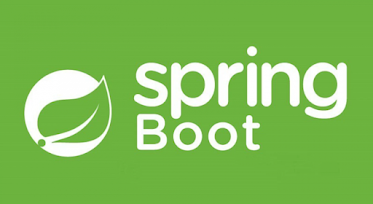Week 2: Spring Boot Basics and Setting Up Your First Application
In today’s fast-paced development world, simplicity and efficiency are key. Spring Boot, a subproject of the Spring Framework, provides a rapid way to create stand-alone, production-ready Spring applications with minimal configuration. If you’re just getting started with Spring Boot, this guide will help you set up your first application and understand the key concepts behind it.
What is Spring Boot?
Spring Boot is a framework designed to simplify the process of building and deploying Spring applications. It eliminates the need for complex XML configuration and provides a set of defaults to speed up development. Some of its key features include:
- Auto-configuration: Automatically configures your application based on the libraries on the classpath.
- Embedded Servers: Includes an embedded Tomcat, Jetty, or Undertow server to run your application.
- Production-Ready Features: Provides metrics, health checks, and externalized configuration.
- Spring Boot Starter Dependencies: Simplifies dependency management by grouping commonly used libraries.
Getting Started with Spring Boot
Follow these steps to create and run your first Spring Boot application:
Step 1: Set Up Your Development Environment
- Install Java: Ensure you have JDK 8 or later installed on your system.
- Install Maven or Gradle: Choose a build tool; Maven is commonly used for Spring Boot projects.
- IDE Setup: Use IntelliJ IDEA, Eclipse, or any IDE with Spring support.
Step 2: Create a Spring Boot Project
The easiest way to create a Spring Boot project is by using Spring Initializr.
- Visit Spring Initializr.
- Fill in the project details:
- Project: Maven
- Language: Java
- Spring Boot Version: 3.x (latest stable)
- Dependencies: Spring Web
- Click Generate to download the project.
- Extract the downloaded project and open it in your IDE.
Step 3: Understand the Project Structure
Here’s a typical Spring Boot project structure:
- src/main/java: Contains your application code.
- src/main/resources: Contains configuration files like
application.properties. - pom.xml: Defines project dependencies and build configurations (for Maven projects).
Step 4: Write Your First Spring Boot Application
Open the DemoApplication.java file and replace its content with the following:
package com.example.demo;
import org.springframework.boot.SpringApplication;
import org.springframework.boot.autoconfigure.SpringBootApplication;
@SpringBootApplication
public class DemoApplication {
public static void main(String[] args) {
SpringApplication.run(DemoApplication.class, args);
}
}
This class is the entry point of your application. The @SpringBootApplication annotation enables
auto-configuration and component scanning.
Step 5: Create Your First Controller
Add a REST controller to handle HTTP requests:
package com.example.demo;
import org.springframework.web.bind.annotation.GetMapping;
import org.springframework.web.bind.annotation.RestController;
@RestController
public class HelloController {
@GetMapping("/hello")
public String sayHello() {
return "Hello, Spring Boot!";
}
}
This code defines a simple controller that maps the /hello endpoint to a method returning a string response.
Step 6: Run Your Application
To run the application:
- Navigate to the project directory in the terminal.
- Run the command:
mvn spring-boot:run - Open your browser and go to http://localhost:8080/hello. You should see the message "Hello, Spring Boot!".
Understanding Spring Boot Starters
Spring Boot introduces starter dependencies to simplify dependency management. For example:
- spring-boot-starter-web: Includes dependencies for web development, such as Spring MVC and Tomcat.
- spring-boot-starter-data-jpa: Includes dependencies for working with databases using JPA.
- spring-boot-starter-test: Includes dependencies for unit testing.
These starters help you get up and running quickly without worrying about individual dependency configurations.
Conclusion
Spring Boot makes it incredibly easy to start developing Java applications by taking care of the setup and configuration. With its auto-configuration, embedded server, and starter dependencies, you can focus on writing business logic instead of worrying about the boilerplate. In the next article, we’ll dive into Spring Boot Configuration and Profiles, helping you manage environments efficiently.
Stay tuned for more on this exciting journey with the Spring Framework!






No comments:
Post a Comment